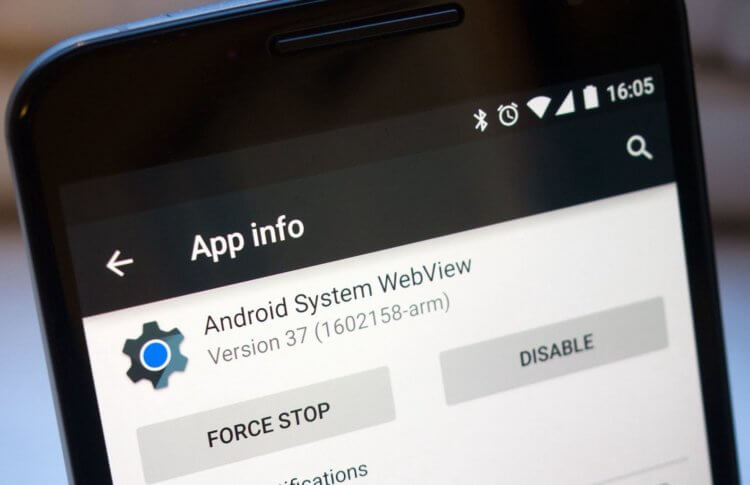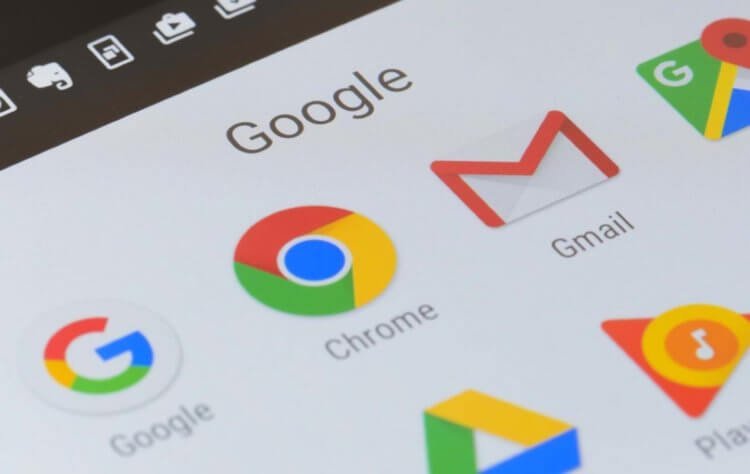Despite the fact that almost all smartphones on Android receive new versions of the OS for only two years, Google is at least trying to keep them up to date for some time by updating its services. To do this, the search giant simply sends updates through Google Play so that those users who are no longer receiving traditional updates can receive planned innovations and emergency bug fixes. However, many, as practice has shown, do not know this, and, seeing how system components with names that they do not understand, ask, for example, what is WebView and why is it needed. Bridging the gap.

You have seen Android System WebView many times, but you probably don't know what it is and why you need it
You may have seen WebView, whose full name is Android System WebView, in two places: in the Google Play directory and in the Applications section. Moreover, he flashes noticeably more often than others, periodically receiving updates and appearing in the descriptions of updates to third-party software, the developers of which for some reason consider it necessary to mention him. There is a plug in every barrel. However, if you look a little deeper, everything falls into place.
What is Android WebView

WebView is a built-in browser for applications
WebView is a system component, or, more simply, an application that is responsible for opening web pages within other applications. I think you have more than once had to open this or that link in a messenger, social network or email client. So, if you noticed, almost always clicking on a link leads to the fact that it opens in the interface of the application itself, instead of taking you to the browser. Thus, it is easier for the developer to track your actions, since he will not be able to get them from a third-party browser.
But since Android System WebView is, in fact, an independent component, from time to time users encounter problems in its performance. Some claim that the WebView is not working, others report that the WebView is not updating, and still others that the WebView is not available. It would seem that the reasons for these problems can be very different and, in order to advise something to users who have encountered them, you need to at least find out additional details or at least at least understand the development of applications and the features of the functioning of system components. But no.
WebView and Google Chrome
Late last year, Google integrated the Chrome WebView component into Android System WebView. Simply put, the company simply made it so that now all links in third-party applications will open in a Chrome widget, which will be built into all programs by default. The search giant explained this by the fact that it allows to reduce the load on the device's resources and facilitate the efficiency of the update. But, as practice shows, this only once again confused users, who generally ceased to understand what to do in case of problems.
And, meanwhile, everything is very simple. While Android System WebView is still self-updating, it is deeply related to Google Chrome. Therefore, when you encounter interruptions in the work of a system component, you do not need to look for updates for it, but install a browser update.
How to refresh Android WebView
- To do this, go to Google Play and swipe from the left edge of the screen;
- Go to the tab 'My applications and games;

Often you should not update Android System WebView, but Google Chrome
- In the window that opens, click 'Update All' or find Google Chrome and update it;
- For reliability, it is recommended to update and Android System WebView if an update is also available for it.
At first glance, it may seem that all this is nonsense, and in fact updates do not solve anything, but this is not so. In the past, Google has repeatedly released such patches that returned the functionality of system components, on which the work of third-party applications largely depended. The last such case occurred in December last year, when due to a crash in Chrome, users were unable to open links in applications that have nothing to do with Google. Therefore, do not neglect updates. They come out for you.
